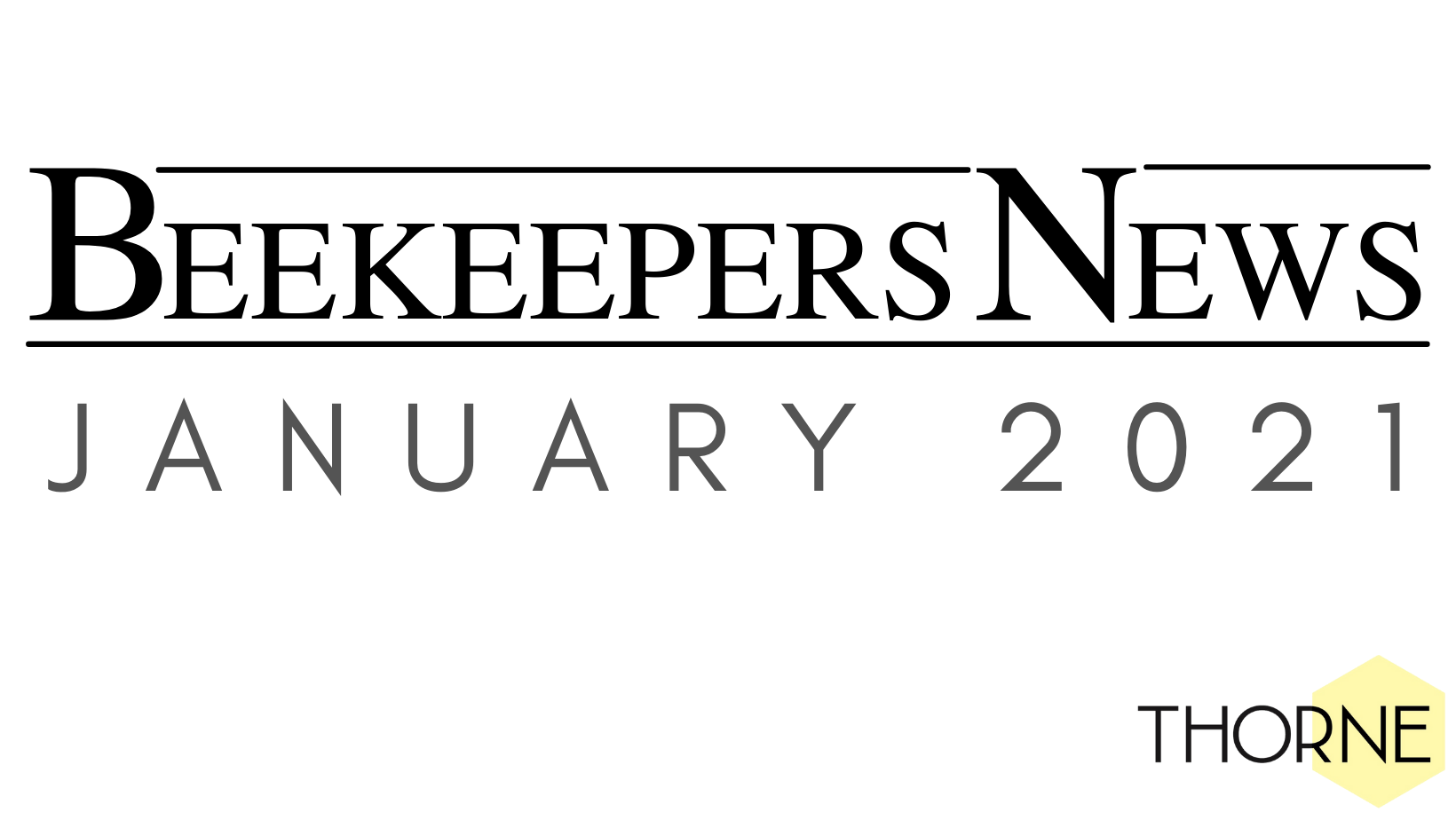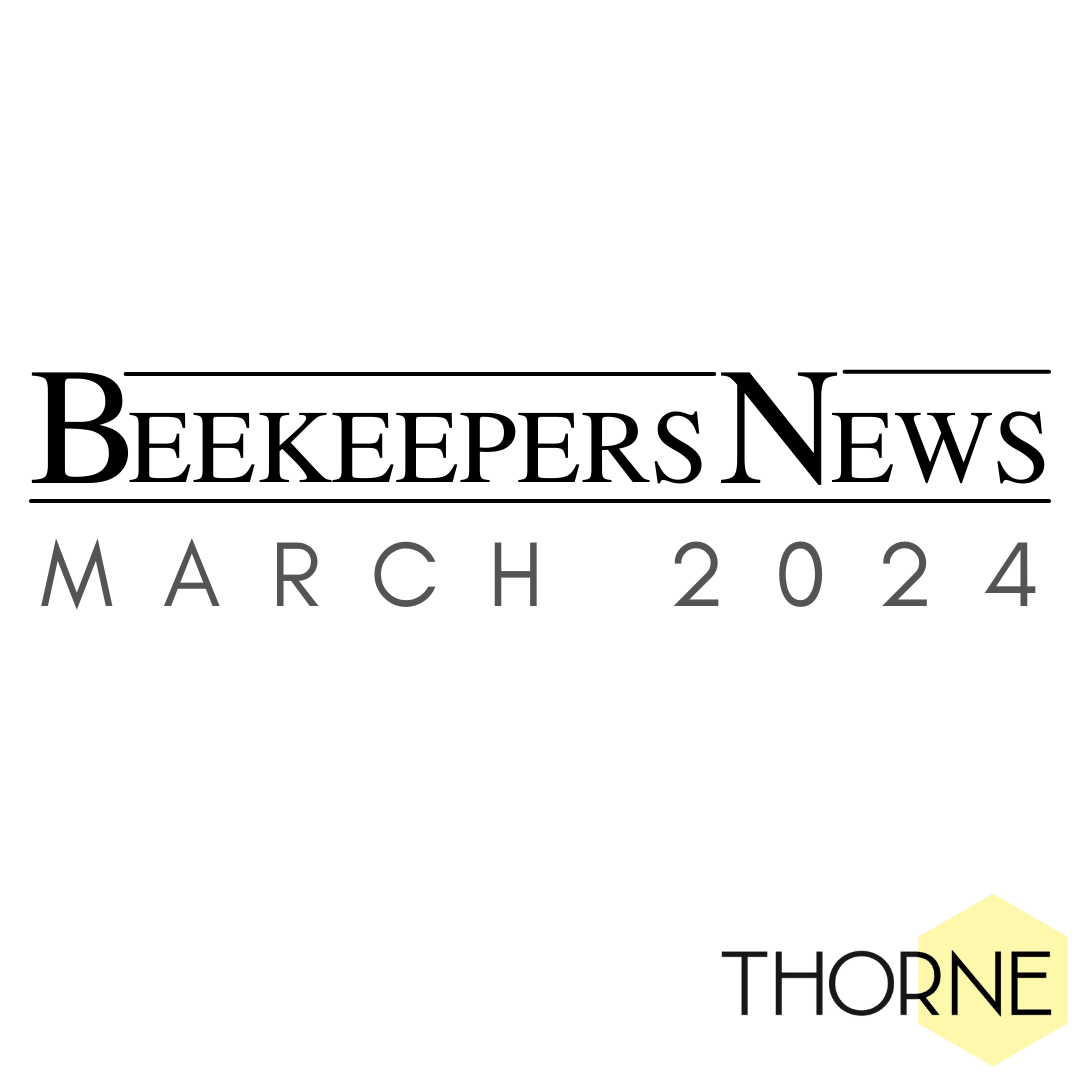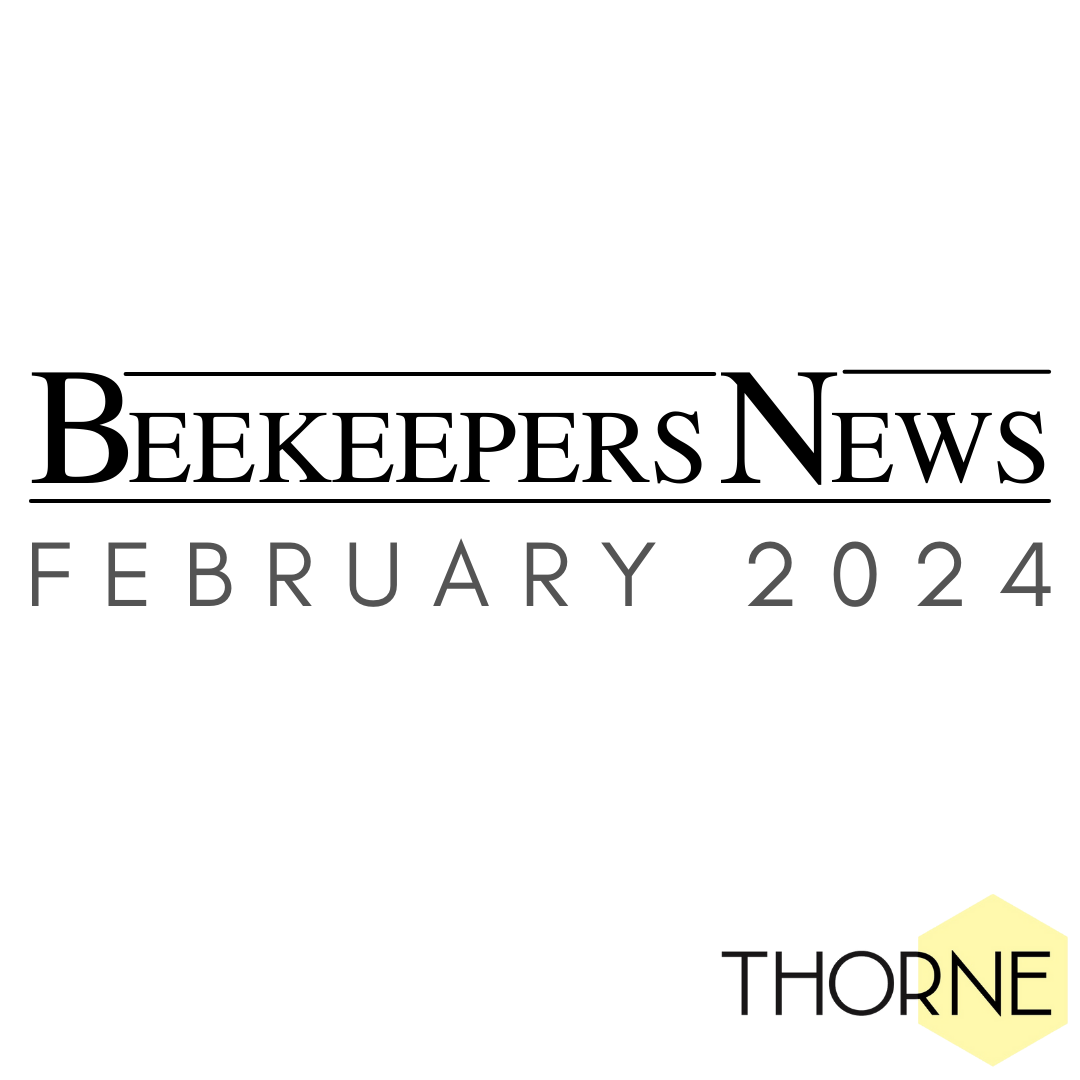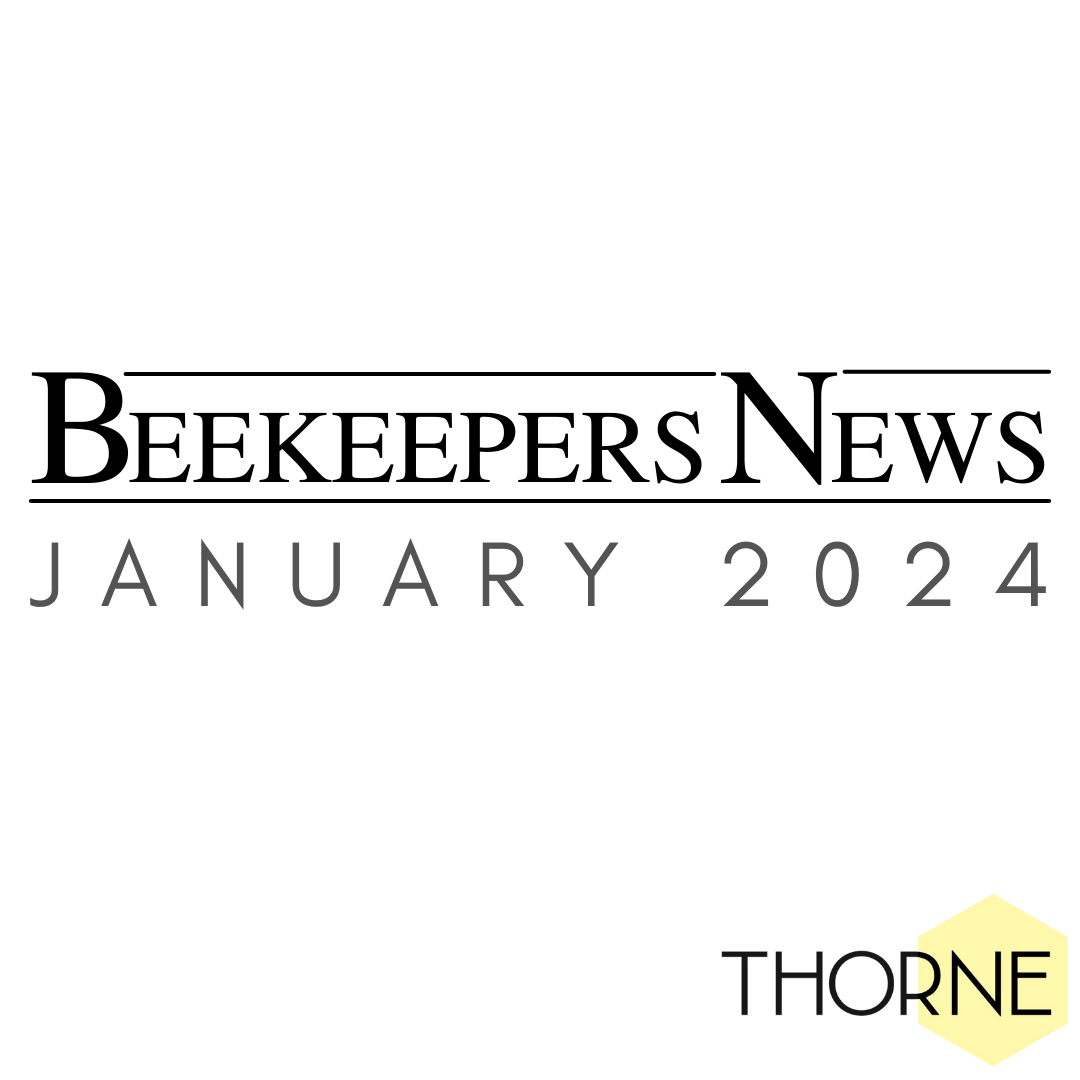Beekeepers News
A very Happy New Year from all at Thornes. Our Winter Sale is now live online and we will be taking phone orders from 9am on Monday 4th January. A link to the sale can be seen here.
December
December is a short month for us at Thornes. Historically we were a building company and always closed down for two weeks over Christmas, as was the norm in that trade. We have continued with this and our team are always pleased with a well-deserved break. We keep a skeleton staff on in the office, despatch and the shop so we can keep up with orders, emails and deliveries.
The various departments also spend time rooting out any shop soiled, end of line or re-furbished equipment. This is all put in our Winter Sale. Much of this has already been sold but there are still a few bargains to be had on the sale website.
We have already started working on your sale orders and we will get these to you just as soon as we can. Please be aware that there may be a delay in receiving your order but please do email sales@thorne.co.uk if there is anything you need urgently. If we hit a cold spell we will delay deliveries which contain foundation until it is a little warmer.
Our new catalogue will be out during February. If you are on our mailing list then you will automatically receive one in the post.
Final chance to receive 10% off Oxybee throughout January!
Have your bees got varroa? Not sure what to treat them with? Try Oxybee, the easy to use oxalic acid treatment from the highly reputable pharmaceutical company Véto-pharma. With many years of experience in developing cutting edge products and treatments for honeybees, Véto-pharma have developed Oxybee with the busy beekeeper in mind. It comes with just one pre-measured bottle of oxalic acid dihydrate and two sachets of sucrose, which when mixed together, is ready to be trickled onto the bees. It really could not be easier, especially when using it with our popular trickle 2 bottle! Oxybee is most effective during broodless periods which makes it the ideal winter varroa treatment. The real advantage over other oxalic acid based treatments however, is that it will keep in the fridge for up to 12 months once made up. So, it can be used later on in the year if needed, meaning less waste. What’s not to like? Get 10% off Oxybee here today!
For up to date information about all the products Vetopharma produce to help fight varroa click here.
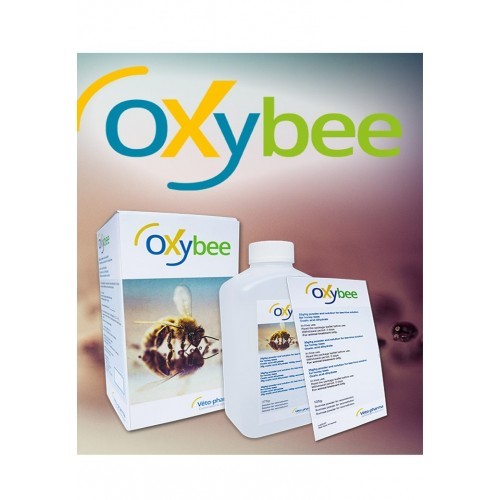
Ask the Expert…….What to do with a hive/frames if you lose the colony
Unfortunately, it happens. Colonies die. This could be for many reasons including, but not limited to:
- Colony never gets going after swarming as it doesn’t manage to requeen
- Queen gets killed on mating flight
- Queen gets killed when hive is knocked over in the wind, by wild animals or in transit
- Queen gets killed by clumsy beekeeper
- Damp weather encourages certain colony diseases e.g. chalkbrood
- Overload of Varroa mites
- Varroa as vectors bringing disease such as Parasitic Mite Syndrome
- Foulbrood diseases slowly kill bees
- Failing queen leading to drone laying queen or laying workers (notoriously hard to requeen)
- Spring dwindling
- Overheating inside the hive
- Lack of stores
- Failure to find the stores located in the hive
- Bad weather causing bees to be exposed to harsh weather
- Failed attempts to requeen as bees kill new queen introduced to them
- Swarming where colony keeps throwing off casts until there is nothing left
- Wasp invasion where bees are attacked and stores are eaten
- Destruction by mice over winter
- Severe wax moth damage
- Instances where colony has to be destroyed e.g. when it has AFB or bad EFB.
And the list goes on…
Looking at that list it is quite impressive that any of us manage to keep our colonies alive!
When a colony dies we are left with an empty hive, which will probably now be in a bit of a state: dead bees on the floor, propolis covering the frames and crownboard, frames with old wax, mouldy pollen, crystalised honey in the supers etc.
It can be really daunting to know what to do with all these bits of equipment. So here are some ideas to get your empty hives useable once more.
Roofs
These are normally ok! Unless of course you haven’t had a crownboard in the right place and before the bees left, they did some really beautiful work building wax on the underside of the roof. This is easily fixed when there are no live bees. Simply scrape the wax off as best you can into a bucket so it can be melted down at a later date and swapped in for foundation.
Crownboards
When feeding syrup via a contact feeder through the hole in the crownboard, you may get a build-up of wax around the hole. Scrape this off and give the edges a good going over as this is where they are likely to get built up with propolis. All this can be put in a bucket too to melt down later. Crownboards come into frequent contact with the bees and all the substances of the hive so if you can get your hands on a blowtorch, scorching it is a great way to get rid of disease or wax moth eggs/larvae that may be lurking in the corners.
Brood box / super
Much the same as with the crownboard but these tend to take longer as the angles are more difficult. Scrape out as much as possible and then blowtorch, particularly into all the corners. Take care to remove any plastic runners before blowtorching.
Super frames
The combs used in super frames used for honey production tend to store better than brood frames as they have less bee debris. Top bars and side bars can be scraped down with a hive tool if the wax is sufficiently clean to use again. If your colony dies during the active season, you can normally extract honey left in supers (exceptions being if it has died from a notifiable disease and you have to destroy the frames). Once extracted, is best to treat these with sulphur strips or acetic acid until you wish to use them in the hive again as this helps to prevent mould and pests. Avoid putting supers of honey onto other live colonies as it can transfer disease. Over winter, many beekeepers simply keep their supers stacked outside or above the crownboard on live colonies because the cold air circulates and stops pests and mould. Alternatively, you can always melt the wax out of the frames and boil the wooden parts to reuse at a later date.
Queen excluder
Scrape off as much wax, propolis and honey as you can. Wooden excluders benefit from a scorch with the blowtorch as well. Do not blowtorch a plastic or zinc slotted excluder - they will melt! If you have a big chest freezer, a short time in there will harden the propolis and make it easier to scrape off. It will also kill wax moth at these low temperatures.
Brood frames
Depending on the state of them, these can almost always be reused if cleaned up sufficiently (exceptions being if it has died from a notifiable disease and you have to destroy the frames). If the wax is clean, as with the super frames, just give the top bars and side bars a good scrape, remembering to do the underside of the lugs. With combs you want to store for a later date (not in hives with bees on!), treat the frames for wax moth using sulphur strips or acetic acid. This will keep them fresh and ready to use. If the wax is dirty or old, cut it out and pop in a bucket to melt down later. You will have to give the frame a good scrape, especially in the grooves on the side bars as this will be where new wax will have to be slotted in when you next make the frame up. Another option is to boil the frames after they have been scraped down. This gets them a lot cleaner than a hive tool will.
Floor
The hive part that is most likely to be heavily loaded with dead bees, wax ‘crumbs’, fallen propolis etc. and can therefore be pretty nasty. Give the floor a good scrape with a hive tool, collecting the debris you scrape off. Open mesh floors come up quite nicely as much of the smaller debris will have fallen through the floor. Unless of course the correx insert has been left in and this can become stuck to the underside of the mesh. This will need prizing apart and the correx cleaning up. With a solid floor, simply scrape free of debris. Both types of floor can be blowtorched, just be careful of any plastic runners.
Polynucs
These have to be dealt with slightly differently as obviously they are made from polystyrene, not wood. First of all, scrub with washing soda solution to remove propolis, wax and honey, then submerge in a large bath of strong household bleach.
Extras
When cleaning up your hive parts, it is a good opportunity to paint them to give an extra layer of protection against the elements. Roofs, brood bodies, supers and floors can all be painted with bee friendly paint.
Any wax that is removed from the hive can be melted down and when it has cooled, traded in for foundation that you can then put in your newly cleaned frames.
Equipment Focus……Bees on a Budget Hive
Almost 15 years ago we introduced the first budget cedar hive within the UK. The original flat packed Bees on a Budget National hive – the hive cost £160 then, and today we have kept the price at the same level. The hive is made from home grown cedar and the frames from economy grade timber, both from sustainable forests. The timber may have live knots and is lighter in colour (because the trees are younger) than Canadian WRC. The bees don’t mind a few knots so this is a great hive for the beginner or experienced beekeeper alike.
Each hive comprises the following
- open mesh floor
- brood body with 11 DN4 frames on metal runners with british standard deep wired foundation
- dummy board
- Plastic queen excluder
- two supers each with 10 SN1 frames on metal castellations with 20 sheets of british standard shallow wired foundation
- crownboard with two plastic porter bee escapes
- 4” roof (or slightly deeper)
- Entrance block
- All nails and glue
- Information booklet. We also have videos showing how to assemble all the hive parts and frames on our Youtube channel or on the website.
We have the option of an assembled budget hive for £240. A good idea for your first hive, especially if you are unsure how to assemble all the component parts.
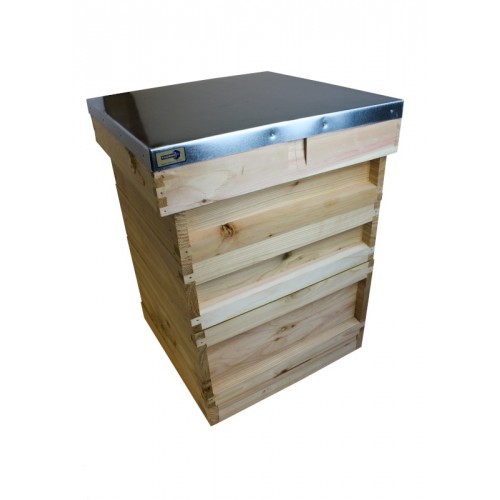
Beekeeping Blog
December
Well, we must have some hungry bees because we’ve had to feed them again! A quick look under the roofs at the crownboards where we place the fondant revealed empty packets in many cases. So, those that needed feeding were fed yet again. Even those that still had some food left were topped up further just to make sure they didn’t run out over Christmas!
As mentioned last month, the main jobs this December would be to re-feed and check the mouseguards, both of which we have done. One particular hive - a twinstock with a small entrance - had got a bit clogged up with dead bees. So, these had to be scraped out for the bees inside to be able to come in and out of the hive.
A quick check under the crownboard of one of the colonies revealed a nice cluster covering around 6 frames. This would have been the perfect cluster if we had been doing oxalic acid treatment at the time because the bees were all up at the top, but that wasn’t a job for that day unfortunately. It is always reassuring to see that the bees are still alive and well inside the hive, even if they are not flying.
We have also been continuing to monitor the levels of varroa using the carbon dioxide tester. We first used this back in September and have found it to be a really easy to use, quick and painless method of checking the amount of varroa in our colonies. As expected, some had very low levels and others were higher. One thing we did find out though was that the majority of the colonies are now broodless, which is handy because it means we can now do our winter oxalic acid treatment. We will probably do this early January when it is a bit colder, on a nice still day so that it disturbs the bees as little as possible.
Here’s hoping that we can return to a bit of normality sometime soon!
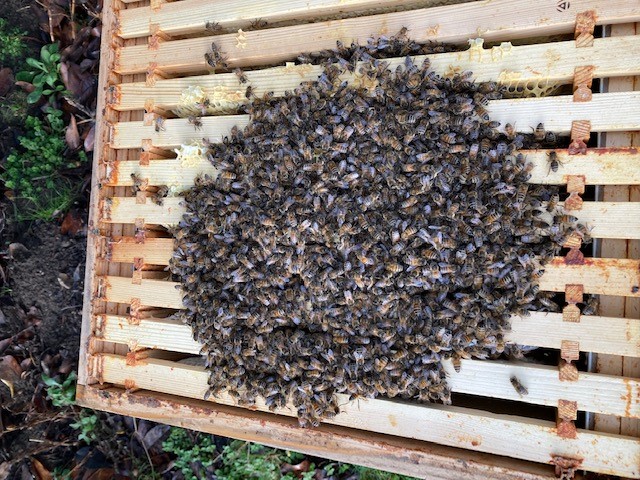
Bees for Development Update
We are grateful to all of you who kindly supported Bees for Development in one way or another last year. You were especially generous for our Big Give Appeal, which raised and exceeded our ambitious target of £100,000. This will be used now to reach over 1,000 chronically poor people in Ethiopia – at a scale that really does make significant and lasting difference.
We are pleased to be able to give something back to you: the latest edition of Bees for Development Journal - free to download from our online shop at http://link.beesfd.org/bfdj137. And please take a look at our new website beesfordevelopment.org. While you are there please visit our shop to see our amazing range of beautiful ceramics, meads and honey gins, gift cards, and all things bee – it’s never too late to send one of our famous bee hampers, and every purchase helps to support our work too.
We appreciate that it is a challenging new year ahead for many people: those we work with in the poorest nations, and for many of our supporters here too – and we send you our best greetings.
National Honey Show
Wishing you and your bees a better New Year than 2020. Hope to see you back at Sandown Park 21 to 23 October 2021!
Follow us on
https://www.facebook.com/E.H.Thorne
https://twitter.com/ThorneBeehives


